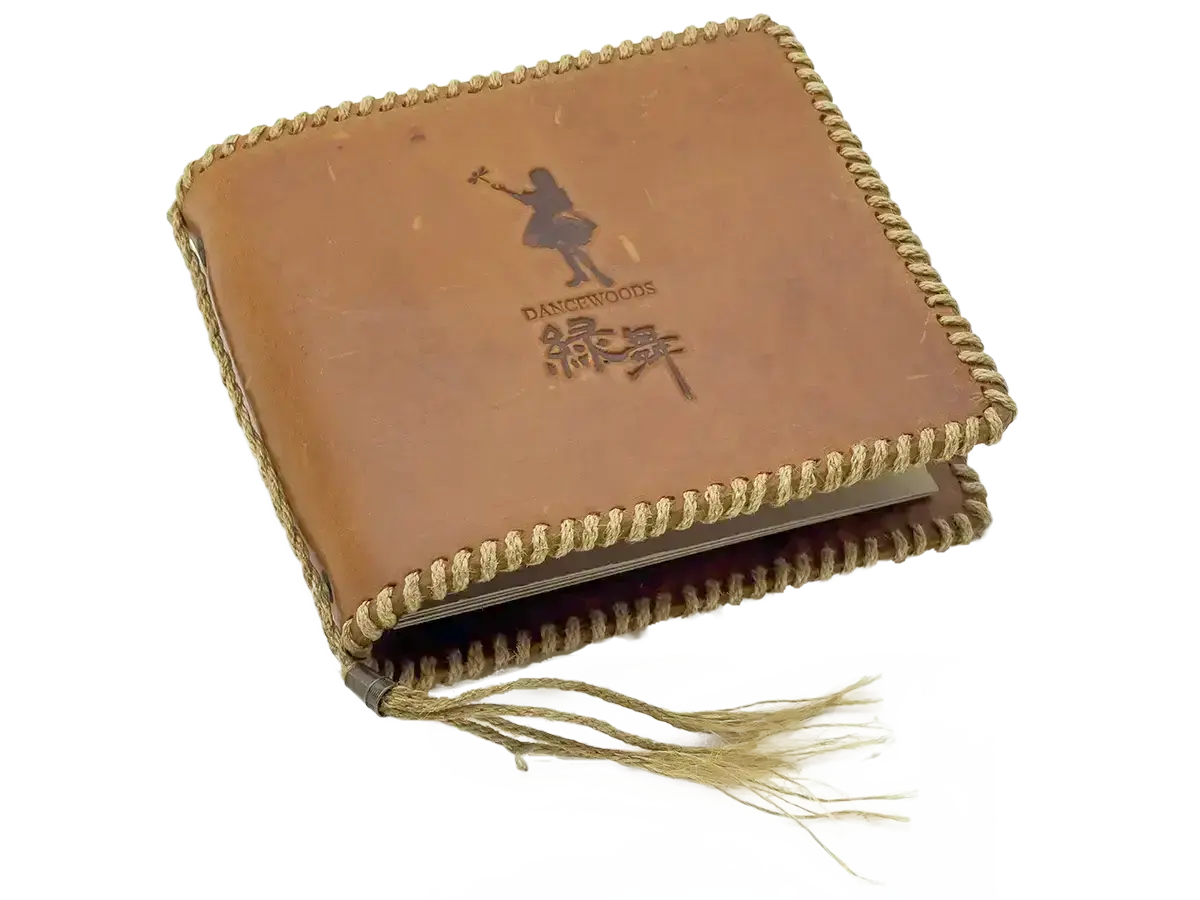
Handmade MENU
Ever-changing, dreamlike, an original art world of handmade menus
![]()
![]()
Traditional Skills

Thank you for the designated use of automobile manufacturers
Following traditional ancient techniques, we have improved the process by using controlled temperature heating without an open flame. This method eliminates the generation of large amounts of carbon dioxide emissions and avoids the production of PM2.5. We take a responsible and sustainable approach towards ecological environment and air quality. The traditional processing is divided into two methods: branding and hot stamping. Each method constitutes one processing cycle, so when both methods are combined, it requires two processing cycles.

Branding

Hot Stamping
There are four processes for latex leather material in this illustration
Window opening + leather texture branding + LOGO branding + hot stamping


Log Branding Color Gradient

Faux Wood Melia Board Branding

Genuine Leather Imprint Color Gradient


Latex Leather Imprint Color Gradient

Faux Suede Imprinted Gradient

Wallpaper Hot Stamping

Synthetic Leather Imprint

Synthetic Leather Rubbing
客房菜單
Our custom menus are one-of-a-kind and can be tailored to the buyer’s preferences. For room service menus, we intentionally make them thick and sturdy to prevent them from being taken away, but we can also make them small and thin based on the buyer’s needs. The materials used for the inside and outside of the menu can be mixed and matched to provide a wide range of options. We recommend using a four-hole metal clip for quick and easy replacement of the pages during events.
We support a variety of fine art papers for the inner pages.

The inner pages of this design utilize our proprietary technology, which includes cardboard pages, and is one of our recommended options. The entire series features pages that can be easily added, removed, or replaced, and we support the purchase of various types of fine art paper, waterproof paper, cardboard pages, and magazine paper for the inner pages. If you prefer not to use PVC materials, the aforementioned materials can be purchased separately for use as inner pages. However, only our shop’s products feature inner pages that are easy to flip, durable, without rebounding, and without cracking or splitting along the spine. For estimated production time and costs, please feel free to inquire.

Cardboard inner pages

General Sika paper inner page

The information is for verification, please pay attention to the Taiwan service time difference
Weekday service hours:
Morning AM09:00~12:00 Afternoon PM01:30~06:00
Please make an appointment for a visit

No.183, Yongle St., Xinzhuang Dist., New Taipei City 24245, (ROC)
Formosa Taiwan
Physical Verification of the Landline TEL:+886 2 2279-5252
Once, a voice had to make its way through copper wires and a spinning dial before it could land far away. Today, with just a gentle tap, our voices pirouette at our fingertips and soar away. Nowadays mobile calls glide across the airwaves free of charge. LINE and Facebook too let our chats dance across worlds without boundaries
Mini Tsai| +886 0939-113-107
Artist | +886 0919-278-778
If we ever brush shoulders in the city’s sweltering heat If by chance I miss your message, please forgive me. Through the groups below, let creativity and inspiration find each other once more:

MEMU™ Facebook page
It may take 36 hours to reply due to Taiwan time difference, Facebook fan page does not have online transaction function, Do not provide quotation or anything about money, Only for technical assistance or answer questions after transaction.

LINE Official Account
You can contact us through LINE app, it may take 36 hours to reply due to Taiwan time difference, LINE has MEMU store, welcome to visit and buy, directly click or scan QR Code with LINE app on your phone to enter the conversation.

LINE Shopping Mall
MEMU™ is the only external LINE shopping mall.
Through LINE Pay / E.SUN Bank payment gateway.
Enjoy online credit card payments and online credit card installment services.

HAPPY BUY™
In-house online quoting service - Happy Buy™.
Online quoting only, no online transaction capabilities.
Both buyers and sellers need to transact through a bank.
